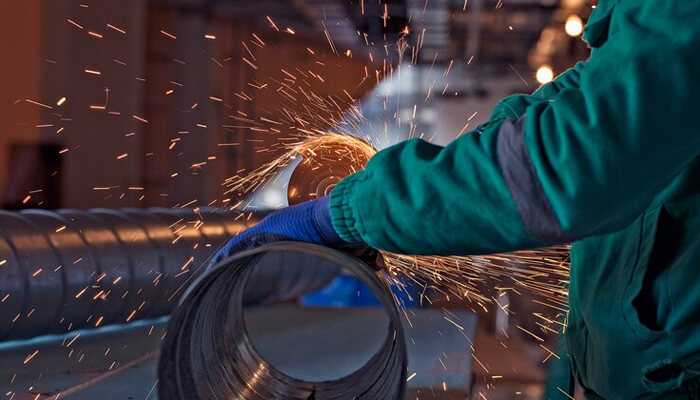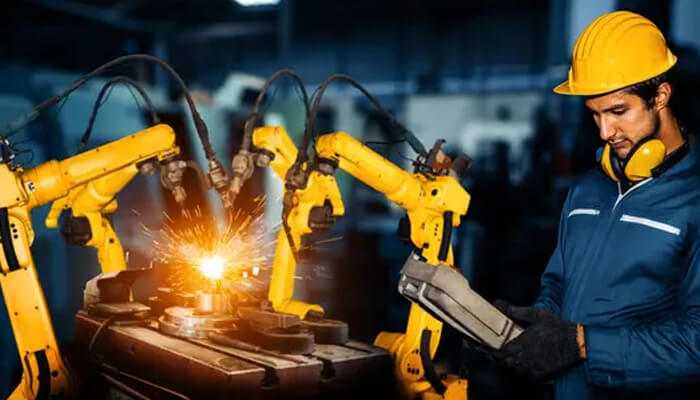Key Takeaways:
1. Emerging technologies are revolutionizing the metal fabrication industry.
2. Automation and AI are increasing efficiency and precision.
3. Sustainable practices are becoming more prevalent in metal fabrication.
4. Customization and flexibility are key drivers of industry growth.
Table of Contents
1. Emerging Technologies in Metal Fabrication
2. The Role of Automation and AI
3. Sustainability in Metal Fabrication
4. Customization and Flexibility
5. Future Predictions for Metal Fabrication
Emerging Technologies in Metal Fabrication
The metal fabrication industry has seen significant advancements in recent years. Innovations like 3D printing, laser cutting, and water jet technology transform traditional methods, allowing for greater precision and efficiency. According to Manufacturing.net, these technologies streamline processes and reduce costs and waste. These emerging tools have enhanced the landscape of metal fabrication, making complex designs more accessible and economically viable. Using conventional methods, fabricators can now achieve intricate designs that were once impossible. For example, 3D printing has revolutionized how prototypes are created, allowing for rapid development and iteration without needing expensive molds or tools.
Laser-cutting technology and water jet cutting offer precise cuts, reduced preparation time, and improved material integrity, making them ideal for high-precision industries like aerospace and medical devices. This results in faster production times.
The Role of Automation and AI
Automation and artificial intelligence (AI) are revolutionizing metal fabrication, enhancing productivity, and minimizing human error. Robotics are used for tasks like welding and assembly, while AI-driven software solutions improve design accuracy and workflow management. This leads to a new era of intelligent manufacturing, predicting maintenance needs and extending machinery lifespan. Collaborative robots, or cobots, assist with repetitive tasks, improving workplace safety and efficiency. AI is used for quality control, identifying defects, and correcting them. Automated systems enable real-time monitoring, optimizing efficiency. This integration leads to sustainable practices, reducing material waste and energy consumption.
Sustainability in Metal Fabrication
The metal fabrication industry embraces sustainable practices, such as recycling materials, using energy-efficient technologies, and minimizing waste. This is ethical and cost-effective, as eco-friendly initiatives can reduce operational costs and meet regulatory compliance. To save money over time and lessen their carbon impact, businesses are replacing outdated equipment with more energy-efficient ones and investing in renewable energy sources.
Closed-loop recycling systems decrease environmental effects and save raw material costs by collecting, melting, and reusing waste metal within the same plant. Energy-efficient technologies like LED lighting and intelligent HVAC systems are also being implemented.
Green manufacturing is becoming more popular, which helps businesses meet environmental standards and draw in eco-aware clients. Embracing sustainable practices is crucial for competitiveness in the metal fabrication industry.
Customization and Flexibility
The market today demands customized and flexible metal components, driving industry growth. Advanced software tools and machinery enable fabricators to efficiently switch between projects and meet diverse customer needs, essential in the aerospace, automotive, and healthcare sectors. Customization has become a competitive advantage for fabricators, allowing them to create intricate parts that meet customer specifications. This flexibility allows for rapid prototyping and quick turnaround times, which is essential for innovation-driven sectors. Fabricators also offer personalized services like custom finishing options and on-demand production runs, ensuring customers receive products suited to their applications. The demand for bespoke solutions is expected to continue, and fabricators that can offer flexibility and customization are well-positioned for success.
Future Predictions for Metal Fabrication
The metal fabrication industry is set for significant transformation due to the integrating of IoT technology and intelligent sensors. This will enable real-time monitoring and predictive maintenance, enhancing operational efficiency and machinery lifespan. Developing new materials, such as metal alloys and composites, will push boundaries for strength, flexibility, and durability, creating new opportunities for innovation.
IoT technology will provide connectivity and data analytics, enabling intelligent sensors to collect performance metrics and send alerts for maintenance. This predictive maintenance can prevent unexpected breakdowns, reduce downtime, and extend equipment lifespan. The integration of IoT with AI can optimize production schedules and inventory management. Furthermore, developments in metal alloys and composites will improve the strength, weight, and resistance to corrosion and wear of manufactured components.
Overall, the next few years are set to be transformative for the metal fabrication industry. With the adoption of cutting-edge technologies and a commitment to sustainability, fabricators can expect increased efficiency, improved product quality, and new growth opportunities. The industry is on the cusp of a new era where innovation and adaptability are crucial to success.




